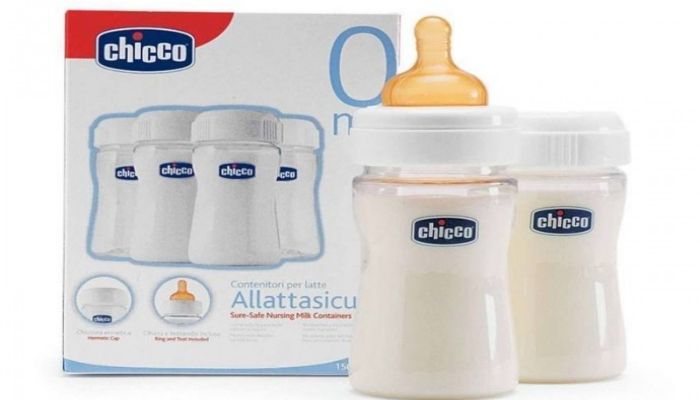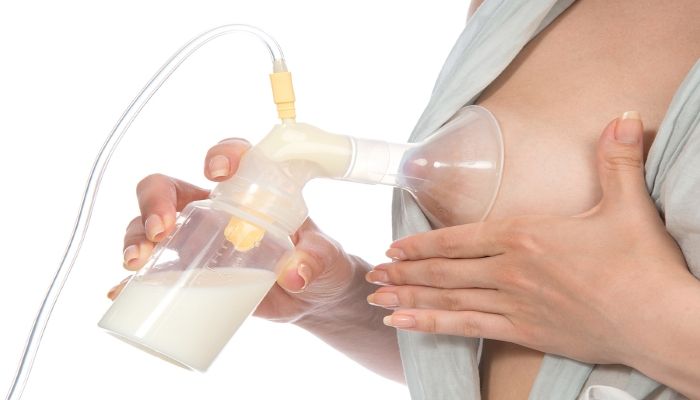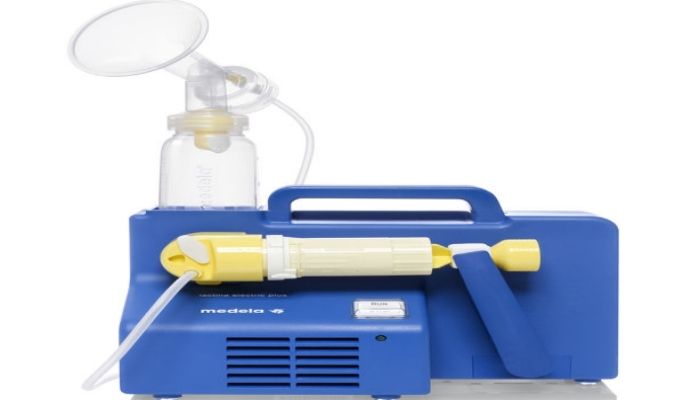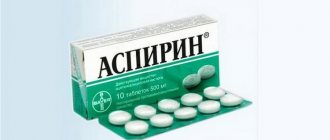First disadvantage: pumping takes a lot of time
Having the pump take up time is annoying, especially when you know you want to get home and see your baby at the end of the day.
You have limited time to do everything you need to do. On the subject: Breastfeeding: going to work
Solution to the problem: Buy a good breast pump.
With a really good double electric pump, you can pump out 95% of your milk in 5 minutes. And these “five minutes” add up. If you do not pump out milk, it will negatively affect lactation.
When you feel guilty about your pumps breaking down so quickly, remind yourself that breastfeeding makes babies less likely to get sick. Plus, fewer sick days for your baby equals fewer missed days of work.
Back to contents
Helpful Tips for Expressing Breast Milk
Where does pumping begin?
Once you have purchased or rented a breast pump, you can start expressing at any time. In the first two weeks after the birth of the baby, you can pump to relieve engorgement of the mammary glands. Expressed milk can be saved for the future, but don’t get carried away with pumping. Frequent pumping in large volumes in the first weeks after birth is a signal to the body that you have triplets and need a large amount of milk. This sounds good, but it can lead to breast problems such as congestion and lactostasis.
As your baby gets older, you can pump as needed. That is, it is not necessary to pump, but this will allow you to have a supply of milk if your mother goes to work. Be sure to read the rules for storing frozen milk. If possible, you should pump to create a milk bank every day at the same time, about two weeks before you are expected to go to work.
The first time you pump, there will be very little milk . This is fine. After all, at first the body produced exactly as much milk as the child needed, according to his needs, no more, no less. In the first days, due to pumping, you get used to the additional stimulation of the breast and the amount of milk will increase slightly.
"Placing an order"
By pumping at the same time every day, you let your body know that it needs to produce more milk, for example, for feeding your baby at 10 am. Even if there is no milk at all during pumping, you order more milk from the body.
Learning to pump
Learning to pump can take some time. You may be stressed or worried about whether you've expressed enough milk (don't worry, everything will work out). You may find the mechanical impact on your breasts unpleasant (it’s still a pleasure!). Listen to the advice and don't worry. You will learn how to pump, set up your breast pump, express the maximum amount of milk in the minimum amount of time, and most importantly, do it in a relaxed manner.
How often should I pump?
If you plan not to go to work, then pumping once a day to create a supply of milk is a lot. Pumping will drive you crazy!
When going to work, it is recommended to express once for each missed feeding. Typically this is about 3 times in an 8 hour work day. You always have the opportunity to focus on your work schedule and the needs of your child.
- If your baby is latching on every two hours, you will need to pump more frequently and for longer periods of time.
- If you don't have enough time to pump during the day, pump in the morning, before leaving the house, in the evening, after the baby has fallen asleep or at night - anything is possible!
- If your baby rarely attaches to the breast, you will need to pump more frequently, as your baby sucks milk more efficiently than a breast pump. See a sample daily routine for moms trying to get it all done.
How long to pump?
In short, you need to express while the milk is flowing. If you want to increase the amount of milk, then you need to pump a little longer, after the milk has stopped being released from the breast. I do not focus on time, but recommend completing things to the end. In general, pumping takes about 15 minutes. If you don't have access to a breast pump, see the section on alternative pumping methods below. There is no harm in pumping for a few minutes after the milk stops flowing, it is a great way to send a signal to your body that it needs more milk (if you have it).
Breast pump settings
Contrary to popular belief, expressing with a breast pump is not aggressive. A strong vacuum when expressing does not lead to a larger amount of expressed milk, but it can lead to painful sensations and lumbago in the chest area, so we reduce the force of pressure. The breast pump should mimic the pressure created when a baby sucks at the breast. Pay attention to the frequency and strength of your baby's suction. Then try setting up your breast pump in a similar way. Try increasing or decreasing these values to help you feel more comfortable and express more milk. The breast pump works the way it is set up, adjust it to suit you, it is your personal item with your personal settings.
Increasing the amount of expressed milk
A few tricks to increase the amount of milk you express without increasing your pumping time. The most effective way to increase milk production is by relaxing and squeezing your breasts.
Relaxation while pumping
Some people find it difficult to relax while pumping, as they would during a dental appointment, but it's worth trying. Relaxation is important, although difficult to achieve if you are tense. Try following these tips:
- Posture: Sit in a chair, relax your shoulders, support the bottle or bottles so as not to lean forward.
- Setting: turn on relaxing music, sit in a rocking chair, drink a mug of tea before pumping, in general - get comfortable!
- Baby things: If you are pumping while you are away from your baby, ask them to bring you some things that remind you of him. Some mothers react very strongly to the smell of their baby, so you can take some of his things (the main thing is not all at once!) with you. Some mothers find that pictures or sounds of the baby help. You can stick a photo of the baby on the breast pump or have a recording of the baby on hand (this is usually upsetting and does not work as a relaxation method).
- Observing the Bottle: For me, the best way to stop milk flowing from the breast is to observe the contents of the bottle. I've always had trouble pumping, stress over the number of milliliters I pumped, which severely limited my ability to pump enough. Look at something else - anywhere! Tell yourself: “Breast milk is a precious gift for my baby, no matter how much there is,” and imagine a waterfall, a spilled tank of milk, your baby’s contented face after feeding—anything that relaxes you.
- Activity: Some mothers prefer to work while pumping. For me, pumping was a time to treat myself after a hard day (like a game of Solitaire). Find something you like - read a book or magazine, surf the Internet if you have access to a computer. Enjoy your time. Or, if you are talking about work and it calms you down, express using the hands-free method and continue working.
Chest compression
By applying extra compression to your breasts while pumping, you stimulate milk production and empty the ducts. While pumping, use one hand to massage your breast from armpit to nipple (or as close as the breast pump breast shield allows without displacement). Gradually increase the pressure and finish with a gentle squeeze of the breast, as you would during hand expression.
To achieve maximum effect, you can combine breast compression with massage - a technique developed by Chele Marmet, LLL consultant. Remove the funnel as soon as the milk stops flowing. Then massage each breast from the armpit to the nipple, then again from the center of the chest to the nipple. Gently massage each breast towards the nipple several times. Bend over and place your chest in your palms. Shake your chest (the shaking should not be painful). Then pumping with a breast pump continues again - milk will begin to be released more actively.
Suitable size
If you have problems with pumping and the tips above did not lead to results, make sure that the breast pump breast shield is the right size for you. Correctly selected funnel size significantly improves milk release. Read the instructions for your breast pump, make sure the breast pump size is correct and start pumping.
Translation: Alena Zakharova, babywearing consultant at the Mama City family training and support center.
Original: https://www.workandpump.com/pumping.htm#Relaxing_while_Pumping
Second drawback: discomfort in the nipples
Breast pumps are not as cute, cuddly or comfortable as babies. The baby's mouth compresses only the right side of the breast to empty the breast of milk. But instead of squeezing the breast like a baby, pumps use a suction method to draw out the milk; they pull the nipple and areola into plastic devices.
Solution: To relieve pain, doctors recommend applying cream to your nipple areolas before pumping to minimize friction and soothe your nipples.
Nipples come in different sizes. When pumping milk, the nipple should not touch any side of the plastic shield. If this happens, you may experience pain. If there is friction between the chest and the shield, a larger size may be needed. Visit the breast pump manufacturer's website or call to find out if your model is available in larger sizes.
Back to contents
How to pump correctly
How to express breast milk by hand? Before you start expressing by hand, some preparation is necessary. You can skip it if the milk comes well and flows in a stream at any touch.
In order to cause a rush of milk or to resolve lactostasis, the following measures will be useful:
- Before pumping, take a warm shower, pouring streams of water over the breast from the armpit to the nipple and from the base of the breast to the nipple. Shower time is 10 minutes.
- Apply a warm gauze compress to your chest for 15 minutes.
- 10 minutes before expressing, you can drink warm tea with milk or plain water.
- Massage the breasts, gently rubbing the gland with the tips of 4 fingers in a circular motion.
- Tilt your body parallel to the floor and lightly shake your chest.
- If lactation is insufficient, then it is useful to let the baby touch the breast or sit next to him.
How to properly express breast milk by hand? Before the pumping procedure, you must wash your hands well with soap and prepare a wide cup for milk, previously sterilized by boiling.
Expression technique
How to express milk correctly? The pumping technique looks like this:
- You need to take a comfortable sitting position, place the milk cup at nipple level, and straighten your back.
- Hold the mammary gland from below with your left hand, and stroke it from above towards the nipple with your right hand.
- Place your thumb on the border of the areola from above, and your index finger below it. Place your fingers in a ring, pressing on the areola. This stimulates the milk ducts. The pad of your thumb needs to slide across your chest from top to bottom. Expression movements are performed rhythmically. Fingers move around the nipple in a circle to express milk from all lobules.
- Pump one breast for 5 minutes, then move on to the other. Afterwards the procedure must be repeated. Thus, the entire pumping process takes at least 15-30 minutes.
- If the skin of the areola and fingers are very wet, you need to blot your chest and hands with a clean cotton towel, and then continue the procedure.
- Expressing continues not until the last drop, but until a feeling of relief. It is better to carry out the procedure more often, so the process of milk formation will be more efficient.
It is important to perform all pumping movements slowly, but confidently; with the correct technique, milk will come out of the breast not in a drip, but in a trickle.
Some experts recommend pumping while feeding your baby. While he is sucking milk from one breast, mom expresses milk into a cup from the other. The meaning of the reception is that the baby’s sucking movements best cause a flow of milk.
When expressing breasts by hand, it is not recommended to:
- apply force, rough pressure on the mammary gland can injure the tissues and milk ducts, which will lead to lactostasis
- press your fingers randomly on different parts of the chest, this will cause irritation
- put pressure on the nipple, this can cause cracks
The pumping procedure should proceed without pain; any pain is a signal that the process technique is not being followed.
In Russia there is a program to support breastfeeding. If you can’t master the pumping technique, you can consult a doctor, a breastfeeding specialist, or call the Hotline for qualified advice.

Method of expressing breasts using a bottle
It is used when the breast is inflamed, the nipple is overstrained and it is impossible to attach the baby to the breast. In this case, you can lightly express the milk using a bottle, and then, when the breasts become softer, offer it to the baby.
Technique for expressing milk with a bottle:
- For the procedure, select a bottle with a neck of at least 4 cm in diameter. It is pre-washed and boiled for 10 minutes. You can start expressing when the neck has cooled down to body temperature.
- Lightly lubricate the areola of the breast with Vaseline.
- Place the bottle on the nipple so that it is drawn into the bottle and milk begins to flow out in a stream.
- Complete the procedure when milk stops flowing from the nipple.

Expressing milk using a breast pump
The modern market offers young mothers many types of breast pumps - manual, semi-automatic, automatic models. The choice depends on preference and ease of use.
Before use, the device must be thoroughly washed and sterilized. Next you need to follow the instructions:
- Insert the nipple into the breast pump funnel so that it is centered. The skin of the areola must be clean and dry, then it will tightly adhere to the walls of the funnel and the necessary vacuum will be created.
- Then the device is started using a button, lever, pear and similar devices.
- If the breast pump is manual, then you need to rhythmically press the bulb or piston handle; in automatic models, you need to adjust the pumping force to your liking.
- The pumping procedure is considered complete when the breasts become soft and the milk flows in a trickle.
Breastfeeding experts believe that hand expression is a gentler procedure. With frequent use of a breast pump, the mammary glands may swell and the areolas may increase in size.

Hardware milk expression
It makes sense when it is necessary to drain the breasts after childbirth or there are clear signs of lactostasis. Hardware breast pumps are now available in almost all maternity hospitals and children's clinics. After several procedures, when lactation is established, you can switch to traditional manual expression or use a breast pump.

Third disadvantage: You are disappointed with the amount of milk
You've done this before. They pumped, pumped, pumped, without getting much milk.
Solution: Turn the source of suction on the chest only to the desired location.
In order to pump out milk effectively, the pump must be powerful. Having problems? This is usually not specified in the instructions. Many mothers who complain about a small amount of milk turn the power up, getting 3 times more milk. The trick is to increase the power as high as possible without causing pain, because as soon as the body begins to feel pain, it responds with unpleasant sensations.
Also give yourself a breast massage. Use your hands to squeeze the milk flow - imitate how a baby feeds - this will help increase the efficiency of the pump. You can do this anywhere on your chest. There is no wrong area. This will help the milk to be pumped out well in the future.
Back to contents
The fourth disadvantage: the connection between household chores and work
It is quite difficult to make pumping take much less time.
After all, you want to still have time to dry and wash all the pumping accessories. But it's also shameful! Who wants to clean a breast pump in a work kitchen anyway? When moms think about pumping and then washing all the supplies so they can pump again a couple of hours later, they get tired very quickly. How to breastfeed if you are back at work?
Solution: The good news is that you don't have to wash every part of the pump after every pumping session. Freshly expressed breast milk can be stored without refrigeration for up to 10 hours. One drop of breast milk contains a million white blood cells, so any milk that remains in or on the pump will defeat any bacteria that may form there.
In other words, it is completely normal to pump out and store the pumping supplies in a plastic bag to be used again the same day. Then take it home and wash it in comfort and privacy. But if you work long shifts, you might want to invest in a second pump so you can use one first and then the other.
There is another trick for quickly cleaning the pump - use special clean wipes and microwave steam bags.
Back to contents











